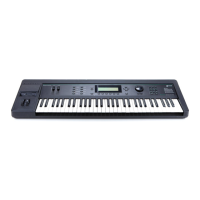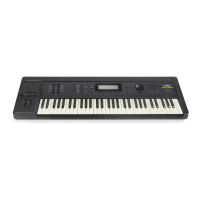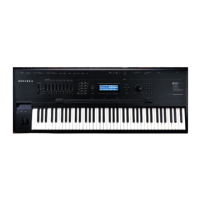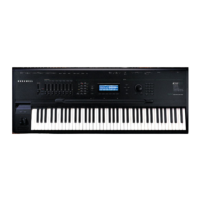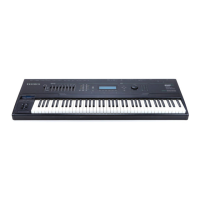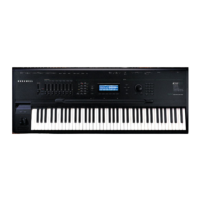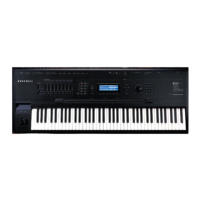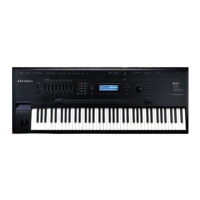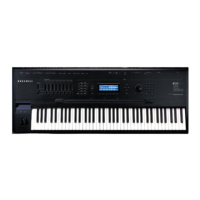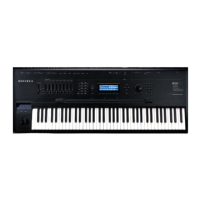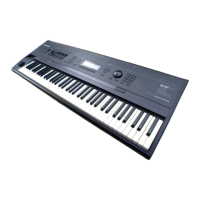3-48
Song Mode and Sequencing
The Song Editor (EditSong Pages)
default) is straight time—no swing. A value of –99% moves every other grid point
1
/
3
of the
distance to the previous grid point).
Shift
Quantizing is a proportional function; it moves Note events different amounts, according to the
distance of each note from the beat. The Shift parameter controls note shifting, which is an
absolute function—that is, it moves all selected Note events the exact same distance forward or
backward. Any shifting that you apply takes place before quantizing. Shifting is useful for
making uniform timing changes to song sections—for example, when you’ve recorded a drum
track dead on the beat, and you want it to play back on the top of the beat.
You can shift notes as much as 26 beats in either direction, in increments of a tick (480 ticks to a
beat). The range of values is -26.020 to 26.020 (although you can’t shift notes past the start or end
points of the song). The number before the period is the number of beats to shift; the number
after the period is the number of ticks to shift (not a decimal, but the actual number of ticks—for
example, a value of 0.240 is 240 ticks, which in 4/4 time is an eighth note).
You can also shift notes after recording, using a separate Shift function that works much like this
parameter. See Track Functions: Shift on page 3-49
Region/Criteria Window
Release
Set Release to Yes if you want to quantize Note Off events as well as Note On events. This moves
each Note Off to the grid location nearest to the time that you released the note. This can change
the duration of notes.
Track Functions: Reference Quantize
Like regular quantizing, reference quantizing aligns Note events to a grid (see Grid on page 3-30
if you need a reminder about what a grid is). Unlike regular quantizing, however, the grid isn’t a
series of even fractions of a beat. Instead, it’s defined by the Note events in an existing track. If
you like your drum track but your bass track isn’t following as tightly as you’d like, reference
quantizing is a good solution.
To reference quantize a track, pick the song that contains the track you want to follow (the
RefSong parameter), then pick the desired reference track within that song (the RefTrack
parameter). Then set the amount of reference quantizing with the Timing parameter, select the
region to be quantized, and press Go. You can also use the Velocity parameter to make the
velocities of the notes in the selected region follow the velocities of notes in the reference track
(see Velocity below).
EditSong:TRACK|||||||||||||||<>Track:1||
Function:RefQuantd|From||:||1:1|To:||2:1
RefSong|:1|NewSond||||||||||||||||||||||
RefTrack:1|||||||d|LoKey|:C|-1||Hi:G|9||
Timing||:100%||||d|LoVel|:0|||||Hi:127||
Velocity:Off|||||d|Width|:1/8|||||||||||
Locate||:||1:1|||'%%^^^^^^^^%%%%%%^%%%%%
FromTo||Play|||Stop||||||||||Go||||Done|
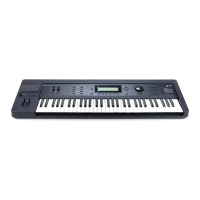
